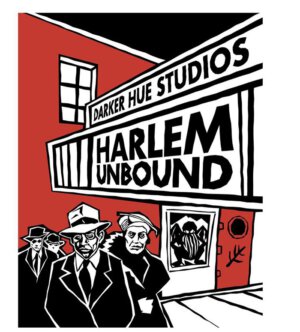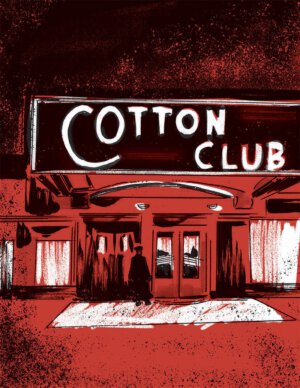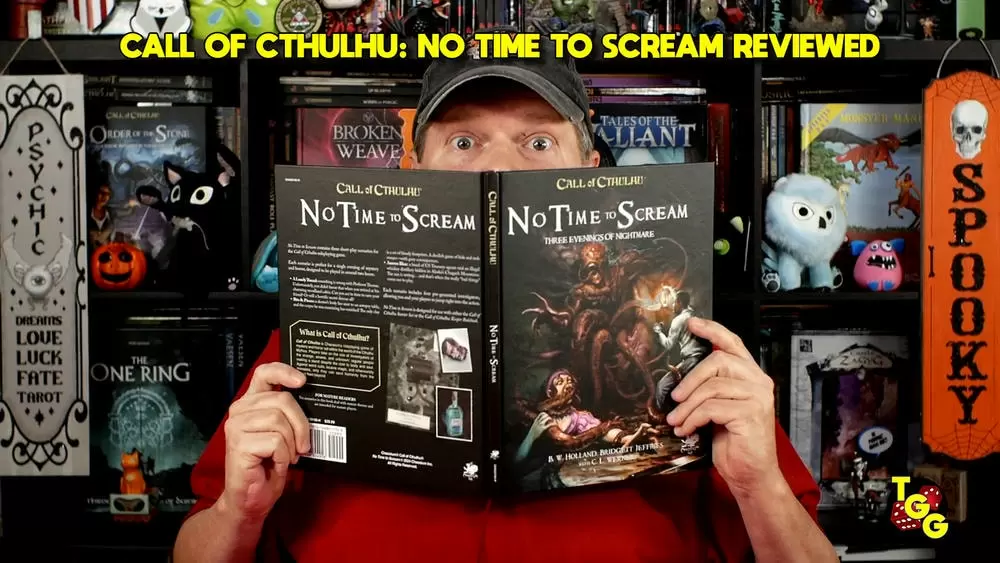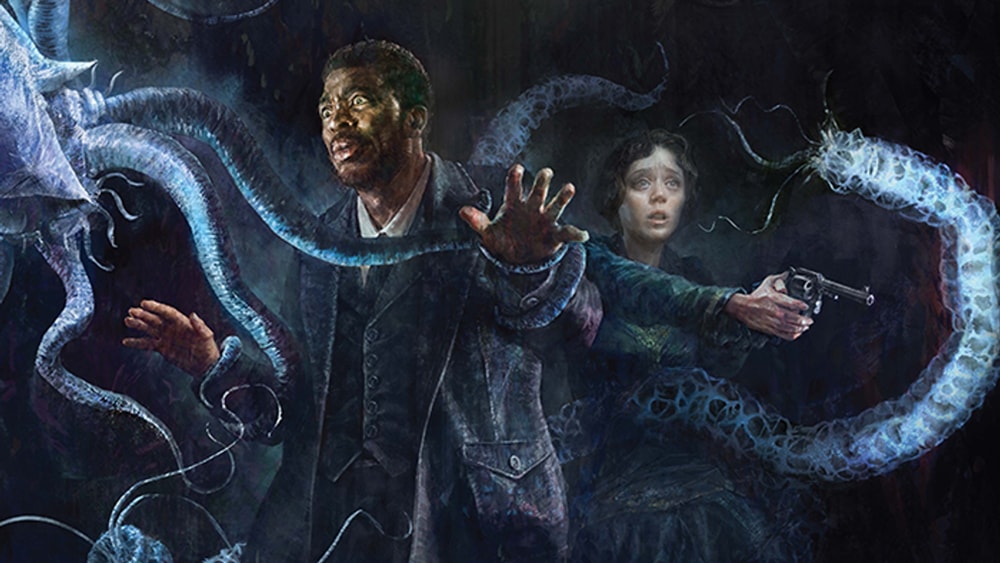
Publisher: Darker Hue Studios
Author: Chris Spivey, with Ruth Tillman, Alex Mayo, Sarah Hood, Bob Geis, and Neall Raemonn Price
Artists: Brennen Reece, Alex Mayo, Philip Pierre, and Nino Malong
Year: 2017
Players: Multiple players – it’s an RPG supplement
Ages: 12+
Pages: 271
Genre: Call of Cthulhu/GUMSHOE Lovecraftian RPG sourcebook
Retail Price: Hardcover $50.00 (Sold Out); Digital Copy, including GM Screen, $25.00 from DriveThruRPG.
The jazz is hot, the shadows are ominous, and the cop on the corner is certainly not your friend; welcome to Harlem Unbound.
Written by Chris Spivey and published by Darker Hue Studios, Harlem Unbound is a sourcebook for Chaosium’s Call of Cthulhu and Pelgrane Press’s Gumshoe systems. Included within its pages are a detailed introduction to the world and the people who populate it, story hooks galore, a generous collection of scenarios, and a section on how to handle one topic that differentiates Harlem from any other title currently on the market: race.
Spivey’s book is focused on the black experience in Harlem from 1919 to 1929 and assumes players —regardless of their own skin color— will primarily do battle with the Mythos as black investigators. This fundamental assumption shapes everything about Harlem Unbound and the book is all the better for it.

This might sound uncomfortable. It’s one thing to step into a fictional world; it’s another to step into a real one, particularly one that caused (and continues to cause) real harm to real people. Harlem Unbound, especially for non-black players, demands a higher level of thought, consideration, and self-reflection than many other titles.
And that’s a good thing.
Spivey acknowledges that white players cannot truly understand what it means to live with the all-encompassing consequences of racism, but notes that “we’re gamers. We embrace the idea of living different lives through play — and each time we do, we learn something new. If we’re lucky, we reach a better understanding of people different than ourselves, and learn to empathize with ‘the other.’”
What follows that introduction is nothing short of a masterpiece.
The prose is rich and evocative; Harlem lives and breathes through Spivey’s words. His overview of the area feels like being given an insiders’ tour. Readers familiar with the neighborhood will be immediately struck by the casual, “lived-in” intimacy with which it is depicted. Woven throughout are introductions to major players of the time, as well as campaign seeds begging to be explored. The amount of research that informs the book is staggering, but the detail enriches rather than overwhelms.

While Harlem Unbound is primarily focused on the black experience, it openly acknowledges the presence of other groups in the area, particularly Italian and Jewish immigrants. Tensions among these groups shaped relations throughout the Harlem Renaissance, especially as many businesses were not black-owned. Spivey’s treatment of both is far more than superficial, however, both in description and execution.
The scenarios are compelling and would make for an excellent campaign if played in order. While there is no shortage of detail to love —including the appearance of a Golem, its Jewish roots firmly intact—the decision to feature the Harlem Hellfighters stands out.
The Hellfighters, otherwise known as the 369th Infantry Regiment, were heroes of World War One, with 171 members being awarded the French Croix de Guerre. Despite their courage, the men of the 369th returned home to a country that was, at best, apathetic, and at worst, openly hostile, and have been largely forgotten in the American cultural narrative. Their continued heroism within the world of Harlem Unbound is a fitting tribute to their bravery and will hopefully inspire players to investigate further.
In order to better support immersion into the world, Spivey includes an impressive selection of biographies; an introduction to many of the contemporary social organizations; notes on cultural achievements, such as the first all-black musical, Shuffle Along; a timeline; a list of recommended media; and a glossary of “Harlemese.”

The book features a number of striking full-page illustrations in black, white, and red to carry through the overall visual design, as well as a number of greyscale portraits of NPCs and historical figures that are beautifully rendered.
On a personal note, as someone native to the New York City area, Harlem Unbound was an absolute joy. I’m the first to admit I can be a harsh judge of New York’s portrayal in the media, but Spivey’s writing delivered on everything I could have asked and more. Easter eggs —like a section entitled “The Rent Is Too Damn High” in homage to Jimmy McMillan’s famous debate performance— abound, but never impede on enjoyment for a reader without context.
Harlem Unbound is a title deserving of superlatives and Chris Spivey is a writer to watch. If you’re someone interested in the future of what tabletop roleplaying might look like, what it might aspire to be, then you owe it to yourself to pick a copy, sit down, and savor it.
[rwp-review id=”0″]



















Thanks for cranking the review out Sami; I love this supplement and would score it near that perfect ten as well (although I’m a bit less enamored by the artwork than you are) but PDF reviews just don’t have a lot of pop on the live show. I’m very glad you took up the mantle so we could get a review here on TGG for this must have CoC/ToC sourcebook.
I do want to mention we should be seeing the second edition, geared toward Call of Cthulhu alone I believe, rather soon. I understand Chris Spivey submitted the final work for Chaosium’s approval and, we must be close to seeing a digital release in advance of a physical book later this year, since the first edition PDF is no longer available on DriveThruRPG but only through the Darker Hue Studios website. Unless, the lack of availablity is just a glitch on DTRPG following their migration to new servers a couple days back… Hahahahaha!
Of course when Chaosium reveals a release date I’ll be sharing it both in our news here and on The Daily Dope.
***Update*** Yep. It turned out DriveThruRPG was having some technical problems and Harlem Unbound is once again available for purchase in PDF.